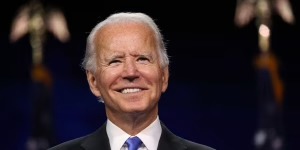How Congress Can Protect Voting Rights
January 28, 2021
In recent years, Republican politicians have fought to make it harder for people—especially minorities—to vote by weakening the 1965 Voting Rights Act, passing photo ID laws, and cutting early voting (to scratch the surface). That behavior should have no place in a democracy; we should be making it easier, not harder for people to vote.
Let’s start by restoring the most important voting rights law in American history: the Voting Rights Act. This law banned poll taxes and literacy tests, required federal oversight of elections in jurisdictions with histories of voter suppression, and was later updated to mandate bilingual ballots in jurisdictions with a sufficient number of non-English speakers. It was renewed by large bipartisan majorities in Congress several times, under Republican presidents. But in 2013, the Supreme Court voted along party lines to gut the law, making it de facto unenforceable. In the last session, the House passed the John Lewis Voting Rights Advancement Act of 2020 (H.R.4), a bill that would restore the provisions of the VRA struck down by the Court.
But it is not enough to simply restore previous protections. While the techniques have changed, voter suppression remains all too common in this country. Congress can protect against it by banning photo ID laws that have been proven to prevent minorities and the poor from voting. Republicans claim that these policies are necessary to protect against voter fraud. In reality, fraud is next to nonexistent: a 2014 Washington Post study found a total of 31 credible allegations of voter fraud out of more than a billion ballots cast from 2000 to 2014, a maximum fraud rate of 0.0000031%. These laws serve no legitimate purpose and end up denying our fellow citizens their voice in government.
In America, if you want to exercise your right to vote, you have to register yourself, often going through a cumbersome process weeks in advance. There’s a better way to do this: automatic voter registration, where everyone who interacts with certain government agencies (e.g., the DMV) is automatically registered to vote, unless they are ineligible or opt out. Some may worry that such a system would be costly and difficult to administer, but in fact states that use automatic registration save money and make election administration easier, while increasing turnout by removing hurdles for voters. Sweden and Denmark both have automatic registration and regularly achieve turnout of over 80%. This simple change could register up to 50 million voters if adopted nationwide. To catch those who don’t get registered automatically, we should make same-day registration available in all fifty states. In Massachusetts, if you fail to register at least 20 days before an election, you cannot vote. Same-day registration laws are already on the books in 21 states and are proven to boost turnout by 5-7%. We should also ensure all Americans have the option to register to vote online.
There’s already a bill that Congress can pass, H.R.1, which would do all of this federally, plus make Election Day a national holiday, ensure a minimum of two weeks of early voting, restore voting rights to ex-felons, and prevent harmful voter purges that are used to disenfranchise Black voters. The bill is supported by 67% of Americans, including majorities of Democrats, Republicans, and independents.
The 2020 election saw a massive increase in mail-in voting in response to COVID-19, but some states were ahead of the curve: Oregon and Washington have been mailing ballots to all registered voters for decades. There are several advantages to this approach. You can research candidates before making a choice, in the comfort of your own home and on your own schedule. It increases turnout among young and old people, the poor, and minorities, and saves states money by cutting down the number of poll workers and polling places needed. All Americans should have the option to cast their ballot by mail.
We also need a Constitutional amendment guaranteeing an affirmative right to vote. The Fourteenth, Nineteenth, and Twenty-Sixth Amendments only define which groups cannot have their right to vote abridged. The franchise cannot be denied on the basis of race, sex, or age (for those 18 or older), but the Constitution does not grant an explicit right to vote. This necessarily makes this critical right weaker than those clearly spelled out in our national charter, such as the right to bear arms or freedom of the press. A right-to-vote amendment would empower Congress to enact stronger pro-voting legislation, make it easier to defend voting rights in the courts, and would formalize what we all agree is a cornerstone of our democracy.
Finally, voting can be made compulsory. Australia routinely gets voter turnout of over 90% because it charges people a fine of about $62 USD if they fail to vote. A fine may be overly punitive for the poor, so, sending every voter, say, $100, for every year in which they vote instead would almost certainly boost turnout. If you truly do not want to cast a vote, you can simply leave your ballot blank and collect your check. But most people would end up voting if they had to make the trip to the polls (or mail box) anyways. While this proposal may face opposition from fiscal conservatives, $24 billion (only 0.36% of the 2020 budget) is a small price to pay to ensure that all of America’s 240 million-odd eligible voters have a say in their government.
The pandemic has given us concrete evidence that making it easier to vote causes more people to do so—and that’s a good thing. In a democracy, politicians shouldn’t suppress the votes of those who disagree with them, they should win them over. During the election, many states loosened voting restrictions due to COVID-19, and the result was the highest turnout in over a century, with two-thirds of eligible voters casting a ballot. But we can and must do better. Both houses of Congress should pass H.R.1, H.R.4, and a bill providing for a permanent, nationwide vote-by-mail option and funding for compulsory voting pilot programs by unanimous consent. Any member who objects to these common-sense reforms can explain why they believe a government that derives its power from the consent of the governed shouldn’t make it easier for the people to have their voices heard.










